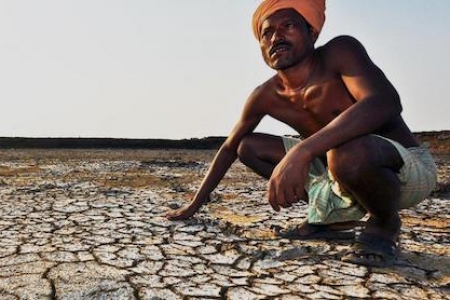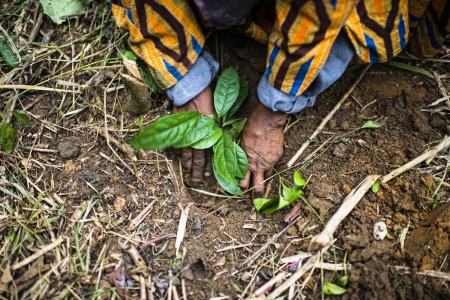In the Ethiopian Highlands, the coincidence of the heavy rainfall events at the beginning of the rainy season and the unprotected land conditions after the dry spell expose the landscape to severe land degradation. The loss of fertile top soils is linked with reduced crop and livestock productivity and forces farmers to move to native and intact eco-systems of the landscape to develop new farmlands. This in turn degrades the natural resource base. Eroded soil and nutrients from agricultural areas are transported downstream which may accumulate in the Lake Tana waterbody and may lead to serious eutrophication problems – especially considering increased fertilizer use in the future. The ongoing activity ‘Combating land degradation and improving productivity through integrated watershed management, monitoring, and community participation’ is being conducted in synergy with a bilateral project funded by ADA (Austrian Development Aid), started in July 2013 and due to end in June 2016. The two projects are carrying out synergetic research, in continuity with a previous ADA project (2009-2012). Since 2010 watershed monitoring was undertaken in the Gumara-Maksegnit watershed, to assess, monitor, and model the effect of the established soil and water conservation (SWC) interventions on runoff, erosion, and nutrient balance. Different well-equipped gauging stations at the outlet of the 54 km2 large catchment, as well as in two approximately 35 ha large sub-basins enabled insight into hydrological watershed dynamics and land degradation issues. In addition to automated water level survey (pressure transducer) and manual bottle sampling at different stages of the runoff events, the installation of three ISCO-samplers at the gauging stations (2014, supported through ADA and WLE funding) enabled advanced monitoring of temporal distributed sediment and nutrient transport. Watershed and sub-watershed level modelling (SWAT) have been already undertaken to assess the impact of the applied soil and water conservation interventions. Preliminary model calibration was done in 2013 based on the results of the first data collection phase. Fine tuning will be done during 2015 based on wider dataset and longer time series. Different transect studies on soil water dynamics and soil physical properties affected by stone bund SWC intervention were conducted (two finished Master theses (2014) and one ongoing MA thesis related to this topic, as well as three presentations at the European Geoscience Union General Assembly (2013 and 2014). However, long term monitoring is needed to build more consistent datasets supporting outscaling of results. Besides the different sources of SWC impact uncertainty the transformation of these effects into proper watershed modeling ‘language’ (SWAT uses MUSLE approach) still requires scale dependent process understanding. Only few publications and guidelines are available focusing on the parameterization of SWC effects of commonly applied practices in the Ethiopia Highlands (such as stone bunds), readily usable for modelling and up-scaling. In 2015 advanced plot level and watershed monitoring will be continued, and integrated with hill slope level tracer experiments (supported by international research partners / IAS CSIC Cordoba) and sub-watershed level runoff monitoring to gain a deeper insight in stone bund soil conservation effectivity. Thus, feasible and model-able SWC parameters shall be assessed - to be published and discussed with partners and research institutes. As a second component of the action, the ongoing gender-based activity on high-efficiency stoves will be also continued. The stoves promoted by the project proved to be effective in reducing the required fire wood supply (and thus mitigating the related pressure on forest resources). In 2014, 570 stoves were locally produced and distributed by community women. Furthermore, distribution was successfully linked to the responsibility of investing five days of documented labor such as maintaining SWC structures. This activity will continued, consolidated, and disseminated to design a consistent approach for targeting increased livelihood of the community while providing proper technologies for conserving the fragile environment of the Ethiopian Highlands.
menu











